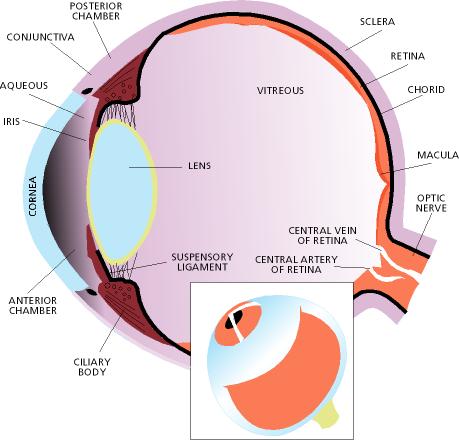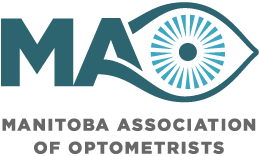When you look at something, each eye receives light rays which land on your retinas and form images. These images are passed along the optic nerve to the brain where the two images are combined into the one clear picture you see.
The cornea, which is at the very front of your eye, and the lens, which sits behind the cornea, work together to bend (refract) the light rays to bring an image into proper focus. Refractive error, or blurred vision, occurs when something is wrong with this focusing system. In addition to refractive error, other eye or health conditions may interfere with the focusing system and affect how well you see.
Although each eye processes what it sees independently, both eyes must work together to see properly. Binocular vision gives you depth perception and in order to see with binocular vision, your eyes must be aligned correctly.
Your optometrist examines your eyes to determine how clearly each eye sees, how well your eyes work together as a team, and the health of your eyes. Because blood vessels are clearly visible inside your eyes, conditions such as high blood pressure, diabetes, and others can be detected during your regular eye examination.

Common Optometric Terminology
Myopia - Nearsightedness
Near objects appear clearer than distant objects. Myopia can cause squinting, blurred vision, eye strain, and headaches.
Hyperopia - Farsightedness
Distant objects appear clearer than near objects. Hyperopia doesn't always cause blurred vision. Most children are hyperopic early in life and this will usually resolve as they grow. However, highly farsighted children have to exert much more effort to focus up close, and hyperopia can manifest as poor concentration, reading difficulty, tired eyes, aching or burning eyes, or headaches.
Presbyopia
As our eyes age, the lenses in our eyes lose flexibility and begin to lose their ability to focus on near objects. This is usually first noticed around the age of 40 or 50 when reading fine print becomes challenging and reading glasses, bifocals or progressive lenses are needed. Presbyopia is a normal part of aging and happens to everyone. It causes difficulty focusing on near objects particularly in low light, eyestrain, and temporarily blurred vision when switching viewing distances.
Astigmatism
Astigmatism is a type of optical distortion which is usually caused by an irregularly shaped cornea. It can also result from eye injury or an uncommon condition called keratoconus. Higher degrees of astigmatism can cause blurred vision, squinting, eye strain, headaches, and fatigue.
Strabismus - "Crossed Eyes"
Strabismus, commonly known as “crossed eyes,” is a muscle condition in which a person cannot align the eyes. One or both of the eyes may turn in, out, up, or down. Eye coordination begins to develop in infancy and if a child’s eye muscles are not able to work together properly, strabismus may develop. People with strabismus may initially experience double vision because both eyes are not focusing on the same object. In an attempt to avoid double vision, the brain eventually disregards the image from one eye.
Amblyopia - "Lazy Eye"
Amblyopia is a developmental disorder that occurs when one eye has stronger vision than the other and the brain decides to depend primarily on images received by the stronger eye. This can occur for a variety of reasons, such as a significant variation in refractive error between the two eyes, or strabismus. People may not even be aware that they have amblyopia if the vision in their stronger eye is normal. Amblyopia is relatively common in children and it is important that it is treated early while it may still be fully corrected. It is often treated with patching of the strong eye to force the brain to acknowledge the “lazy” eye, and/or by addressing the underlying cause.
